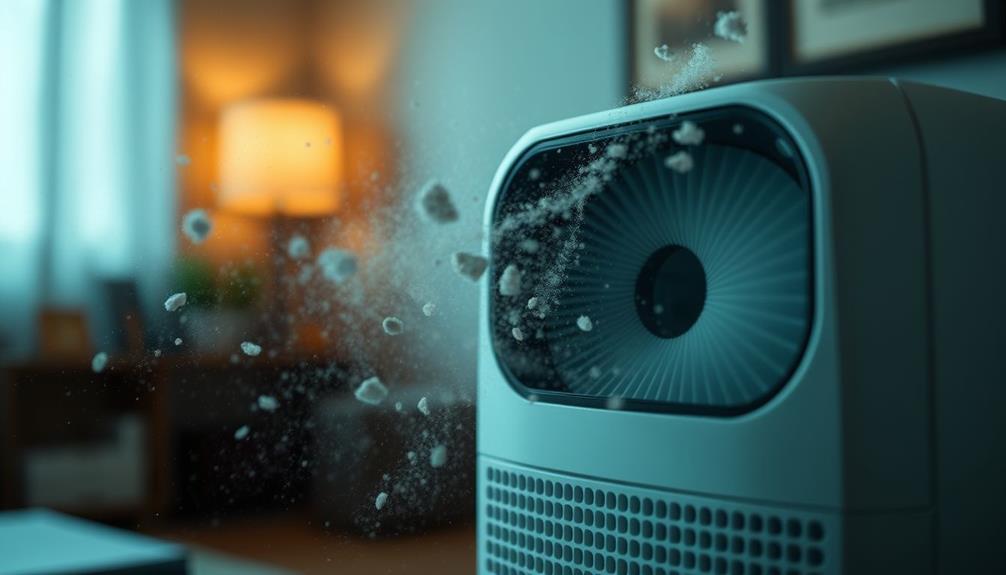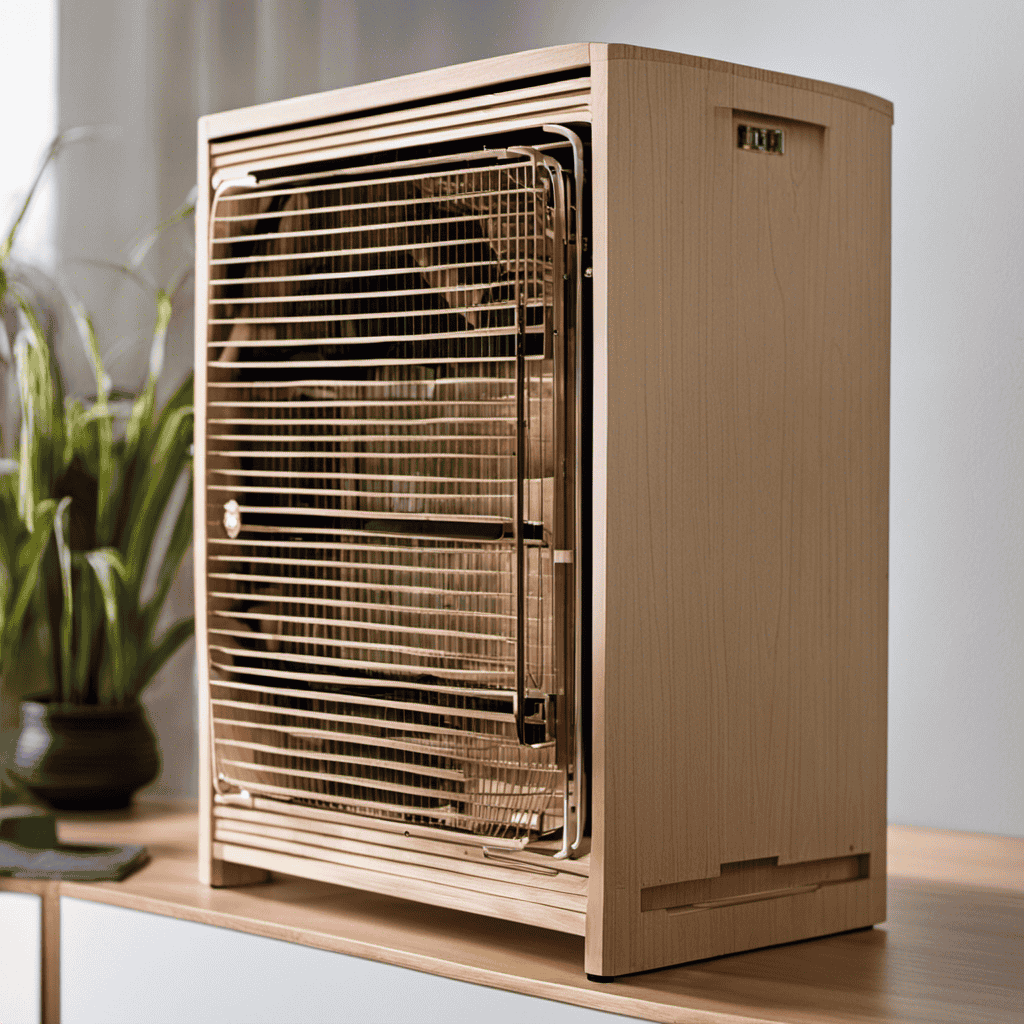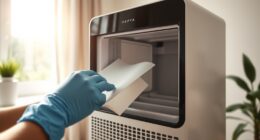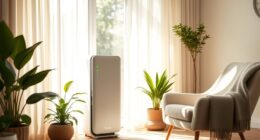If your air purifier smells bad, it could be due to dirty filters, high humidity, or improper placement. Dirty filters often produce dusty or sour odors, while damp filters can harbor microbial growth, leading to musty smells. New units might have a temporary plastic odor that usually fades. To fix it, clean or replace your filters regularly and guarantee the unit's in a well-ventilated area. Monitor humidity levels to prevent moisture buildup. By following these simple steps, you can improve your air quality and banish those unpleasant smells. There's more to explore about keeping your air purifier in top shape.
Key Takeaways
- New appliances may emit a temporary plastic smell; air them out in a well-ventilated area to dissipate the odor.
- Dirty or damp filters can cause unpleasant odors; replace or clean them regularly to maintain air quality.
- Microbial growth, often resulting in a wet dog smell, can occur in high humidity; keep humidity levels in check to prevent this.
- Regularly monitor and replace filters to avoid sour or chemical smells, indicating saturation with VOCs or pollutants.
- Persistent odors despite maintenance may indicate deeper issues; consider seeking professional help for thorough inspection and repairs.
Common Causes of Bad Smells
Air purifiers can sometimes emit unpleasant odors, and understanding the common causes can help you address the issue quickly. One culprit might be the "new appliance smell," which often comes from the manufacturing materials. This plastic-like odor usually dissipates within a few days of use.
Additionally, improper placement of the unit can lead to inadequate air circulation, which may exacerbate odors. Regularly checking the placement and ensuring it's in a central location can help improve air flow and reduce unwanted smells, especially in spaces with persistent air quality issues where ozone air purifiers might be beneficial.
Another major source of bad smells is dirty filters. If you notice a dusty odor, it's likely time to replace the filter to maintain ideal air quality. Similarly, damp filters can produce strange smells, especially in areas with high indoor humidity. Ventilating the space or using a dehumidifier can help alleviate this issue.
A sour smell can also develop if filters designed to purify formaldehyde become saturated, signaling the need for cleaning or replacement.
Additionally, microbial growth, such as bacteria or mold, can give off a wet dog smell. This typically happens when moisture accumulates on the filters, making regular maintenance essential. Keeping an eye on your filter's condition and indoor humidity levels can help you prevent these unpleasant odors from returning.
Identifying Different Odors

When dealing with bad smells from your air purifier, it's important to identify the specific odors to address the underlying issues effectively.
A plastic smell is common in new units and usually fades within a few days. However, if you notice a persistent burnt smell, it may indicate overheating or a defect that needs immediate attention.
Implementing holistic lifestyle approaches can enhance your overall well-being, indirectly impacting the air quality in your home.
Sour odors often stem from filter saturation with formaldehyde, especially in models designed for this purpose, signaling the need for cleaning or filter replacement.
Dusty smells can arise from dirty pre-filters or filter surfaces, which require monthly cleaning to maintain ideal air quality.
If you catch a wet dog smell, it could be a sign of microbial growth due to damp filters, often worsened by high indoor humidity. Keep an eye on humidity levels to prevent this.
Finally, if you detect chemical smells, your filters may be saturated with volatile organic compounds (VOCs), indicating that it's time for immediate filter replacement.
Effective Solutions for Smells
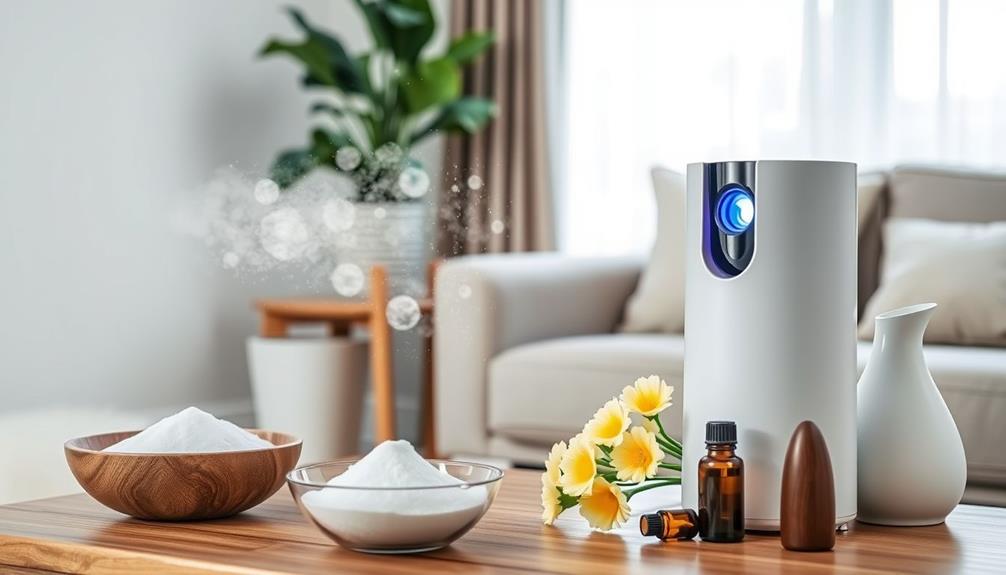
Persistent odors from your air purifier can be a nuisance, but effective solutions exist to tackle them head-on. Start by addressing any initial plastic smells from a new unit. Allow it to air out in a well-ventilated area for a few days, as this odor typically dissipates over time.
Additionally, it's important to remember that certain environmental factors can contribute to unpleasant odors; for instance, strong fragrances or dampness in the surrounding area may exacerbate the issue. To combat unpleasant odors caused by dirty or saturated filters, regularly clean or replace them according to the manufacturer's instructions. If you notice sour smells indicating filter saturation with formaldehyde, act quickly to maintain air quality by replacing the filter sooner.
If damp filters are the culprit, ventilate them for several hours and monitor humidity levels to prevent moisture buildup. Utilizing odor absorbers such as activated charcoal, baking soda, or vinegar around your air purifier can also help mitigate persistent smells.
Remember that proper maintenance is key; staying on top of filter changes and humidity levels will keep your air fresh. By implementing these effective solutions, you can eliminate air purifier smells and guarantee a healthier indoor environment.
For further information on maintaining a healthy environment for pets, check out cat health and nutrition.
Maintenance Tips for Air Purifiers

To keep your air purifier functioning effectively and odor-free, regular maintenance is key. Here are some essential maintenance tips to help you out:
| Maintenance Task | Frequency | Purpose |
|---|---|---|
| Regularly clean the pet | Weekly | Prevent odor buildup and maintain hygiene |
| Replace non-washable filters | Every 2-4 months | Eliminate accumulated smells and maintain air quality |
| Use cleaning solutions for filters | Monthly | Remove odors and microorganisms |
| Monitor humidity levels | Weekly | Prevent mold growth and unpleasant odors |
| Confirm proper placement | Always | Enhance airflow and reduce dust accumulation |
When to Seek Professional Help
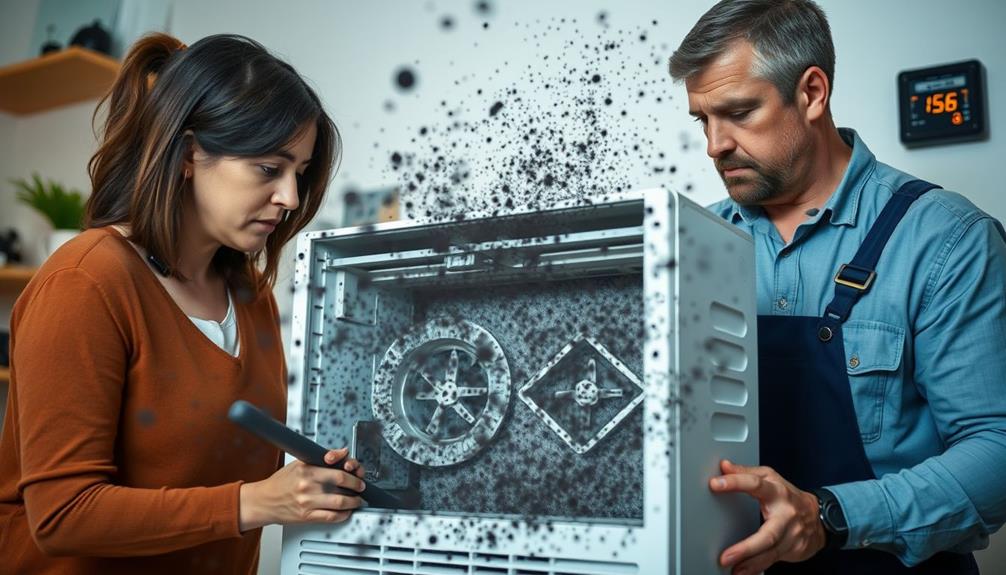
If your air purifier continues to emit unpleasant odors despite your best efforts in maintenance, it might be time to call in the professionals. Persistent odors often signal deeper issues that regular cleaning and filter replacement can't resolve.
In addition, considering the significance of home security systems can also enhance your overall well-being, just as a well-maintained air purifier contributes to a healthier living environment. If you notice signs of malfunctioning components, like a burning smell or unusual noises, don't wait—seek immediate professional intervention to prevent further damage.
You might find it challenging to replace filters or access internal components on your own. In such cases, expert assistance guarantees proper maintenance and avoids potential mishaps.
Additionally, if you're experiencing health issues that you suspect are linked to poor air quality, consulting a professional can be vital. They can help identify and rectify any problems with your air purifier that could be affecting your well-being.
Regular service appointments with HVAC professionals can provide thorough inspections and maintenance, assuring the long-term effectiveness and safety of your air purifier.
Conclusion
In summary, if your air purifier starts to smell bad, don't despair—you can tackle the issue like a modern-day Odysseus steering through stormy seas. By identifying the source of the odor and following the solutions outlined, you can restore fresh air to your home. Regular maintenance is your secret weapon against unwanted scents, and if problems persist, don't hesitate to call in the experts. Breathe easy, and let your air purifier work its magic once again!

